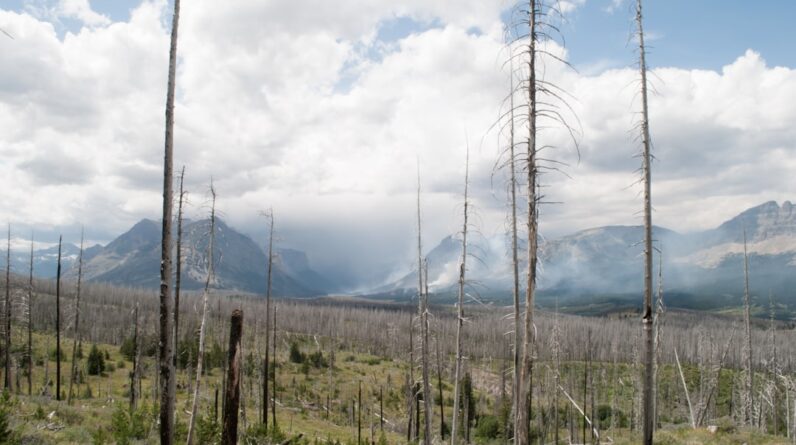
Reforestation is a critical endeavor that holds immense significance for the health of our planet. As you consider the myriad benefits that come from planting trees, it becomes clear that reforestation is not merely an environmental initiative; it is a vital strategy for sustaining life on Earth. Trees play a fundamental role in maintaining ecological balance, providing habitats for countless species, and supporting the intricate web of life that exists within forests.
By engaging in reforestation efforts, you contribute to the restoration of ecosystems that have been damaged by human activity, ensuring that future generations inherit a healthier planet. Moreover, reforestation serves as a proactive response to the pressing challenges posed by climate change. As you witness the increasing frequency of extreme weather events and shifting climate patterns, it becomes evident that restoring forests can help mitigate these effects.
Trees absorb carbon dioxide from the atmosphere, acting as natural carbon sinks that help combat global warming. By participating in reforestation projects, you are not only helping to restore lost habitats but also playing a crucial role in the fight against climate change, making your contribution all the more significant.
Key Takeaways
- Reforestation is crucial for restoring and maintaining healthy ecosystems, preserving biodiversity, and mitigating climate change.
- Deforestation disrupts ecological cycles by reducing habitat for wildlife, altering water and nutrient cycles, and increasing soil erosion.
- Reforestation plays a key role in restoring biodiversity by providing habitat for a variety of plant and animal species.
- Trees are essential for carbon sequestration, helping to mitigate the effects of climate change by absorbing and storing carbon dioxide from the atmosphere.
- Reforestation contributes to soil health by preventing erosion, improving soil structure, and promoting nutrient cycling, leading to increased agricultural productivity.
How Deforestation Disrupts Ecological Cycles
Deforestation disrupts ecological cycles in profound ways, leading to a cascade of negative effects on the environment. When you think about the intricate relationships between various species and their habitats, it becomes clear that removing trees can have devastating consequences. Forests are home to diverse flora and fauna, and when trees are cut down, entire ecosystems can collapse.
This disruption can lead to the extinction of species that rely on specific habitats, ultimately diminishing biodiversity and destabilizing ecological balance. Additionally, deforestation alters nutrient cycles within the soil and affects water retention in the environment. Without trees to absorb rainfall and release moisture back into the atmosphere through transpiration, you may notice changes in local weather patterns.
The loss of tree cover can lead to increased soil erosion, as there are fewer roots to hold the soil in place. This erosion not only depletes the land of its nutrients but also contributes to sedimentation in rivers and streams, further harming aquatic ecosystems. The interconnectedness of these cycles highlights the importance of maintaining forested areas and underscores the urgent need for reforestation efforts.
Restoring Biodiversity through Reforestation

One of the most compelling reasons to engage in reforestation is its potential to restore biodiversity. As you delve into the topic, you will discover that forests are among the most biodiverse ecosystems on Earth, housing millions of species of plants, animals, and microorganisms. When you participate in reforestation initiatives, you are actively contributing to the revival of these ecosystems.
By planting native tree species and creating diverse habitats, you help create an environment where wildlife can thrive once again. Restoring biodiversity through reforestation also has far-reaching implications for ecosystem resilience. A diverse ecosystem is better equipped to withstand environmental changes and disturbances, such as climate fluctuations or disease outbreaks.
When you support reforestation efforts, you are not only helping to bring back lost species but also enhancing the overall health and stability of ecosystems. This restoration process fosters a more balanced environment where various species can coexist harmoniously, ultimately benefiting both nature and humanity.
The Role of Trees in Carbon Sequestration
Trees play a pivotal role in carbon sequestration, making them essential allies in the fight against climate change. As you learn more about this process, you’ll understand how trees absorb carbon dioxide from the atmosphere during photosynthesis, storing carbon in their biomass and releasing oxygen as a byproduct. This natural mechanism is crucial for reducing greenhouse gas concentrations in the atmosphere.
By participating in reforestation projects, you are directly contributing to this vital process, helping to mitigate climate change and its associated impacts. Furthermore, the carbon storage capacity of trees varies depending on their species, age, and health. As you engage in reforestation efforts, it’s important to consider planting a diverse range of tree species that are well-suited to local conditions.
This diversity not only enhances carbon sequestration potential but also promotes ecosystem resilience. By understanding the role of trees in carbon sequestration and actively participating in reforestation initiatives, you become part of a larger movement aimed at combating climate change and fostering a sustainable future.
Reforestation and Soil Health
The relationship between reforestation and soil health is intricate and vital for maintaining ecological balance. When you think about forests, it’s easy to overlook the importance of soil as a foundational element of these ecosystems. Trees contribute significantly to soil health by preventing erosion, enhancing nutrient cycling, and improving soil structure.
As you engage in reforestation efforts, you help restore these essential functions that support not only plant life but also a myriad of organisms that inhabit the soil. Moreover, healthy soils are crucial for agricultural productivity and food security. When forests are cleared, soil degradation often follows, leading to reduced fertility and increased vulnerability to erosion.
By participating in reforestation initiatives, you are not only helping to restore forested areas but also promoting healthier soils that can support sustainable agriculture practices. This interconnectedness between trees and soil underscores the importance of reforestation as a holistic approach to environmental restoration.
Reestablishing Water Cycles through Reforestation

Reforestation plays a significant role in reestablishing water cycles within ecosystems. As you explore this topic further, you’ll discover how trees influence local hydrology by regulating water flow and maintaining moisture levels in the environment. Through processes like transpiration, trees release water vapor into the atmosphere, contributing to cloud formation and precipitation patterns.
When forests are lost due to deforestation, these natural processes are disrupted, leading to altered rainfall patterns and increased risk of drought. By engaging in reforestation efforts, you help restore these vital water cycles. Planting trees not only enhances local water retention but also improves groundwater recharge rates.
This is particularly important in regions facing water scarcity or experiencing changes in precipitation patterns due to climate change. Your involvement in reforestation initiatives can have a lasting impact on local water resources, ensuring that communities have access to clean water while also supporting healthy ecosystems.
Economic and Social Benefits of Reforestation
Reforestation offers numerous economic and social benefits that extend beyond environmental restoration. As you consider the broader implications of planting trees, you’ll find that reforestation initiatives can create jobs and stimulate local economies. From tree planting to forest management and ecotourism opportunities, these projects provide employment options for communities while promoting sustainable practices that benefit both people and nature.
Additionally, reforestation can enhance community resilience by providing resources such as timber, fruits, and medicinal plants. When you support reforestation efforts, you contribute to building sustainable livelihoods for local populations while fostering a sense of stewardship for the environment. The social benefits of reforestation extend beyond economic gains; they also promote community cohesion as individuals come together to work towards a common goal—restoring their natural surroundings for future generations.
Challenges and Opportunities in Reforestation Efforts
While reforestation presents numerous opportunities for environmental restoration and community development, it is not without its challenges. As you delve into this topic, you’ll encounter obstacles such as funding limitations, land tenure issues, and competing land-use priorities that can hinder successful reforestation initiatives. Additionally, ensuring that planted trees thrive requires careful planning and ongoing maintenance to address factors like pests, diseases, and climate variability.
However, these challenges also present opportunities for innovation and collaboration. By leveraging technology such as remote sensing and data analytics, you can enhance monitoring efforts and improve decision-making processes related to reforestation projects. Furthermore, engaging local communities in planning and implementation fosters a sense of ownership and responsibility towards forest conservation efforts.
As you navigate these challenges and opportunities in reforestation efforts, your involvement can contribute to creating sustainable solutions that benefit both people and the planet. In conclusion, reforestation is an essential practice with far-reaching implications for ecological health, climate stability, and community well-being. By understanding its importance and actively participating in reforestation initiatives, you can play a vital role in restoring our planet’s ecosystems while fostering sustainable livelihoods for future generations.
The journey towards a greener future begins with your commitment to planting trees and nurturing the environment around you.
Restoring balance through reforestation is crucial for repairing broken ecological cycles, as discussed in the article “Advantages of Planting Trees for Climate Change” from Live Life with a Cause. This article highlights the numerous benefits of planting trees, such as reducing carbon dioxide levels, providing habitat for wildlife, and improving air quality. By planting trees on a massive scale, we can also prevent floods, as explained in the article “Preventing Floods by Massive Tree Planting” from the same website. Additionally, planting trees helps combat climate change by sequestering carbon dioxide and releasing oxygen, as detailed in the article “How Does Planting Trees Help Climate Change” also from Live Life with a Cause.
FAQs
What is reforestation?
Reforestation is the process of restoring and replanting forests that have been depleted or destroyed, with the goal of improving ecological health and biodiversity.
How does reforestation repair broken ecological cycles?
Reforestation helps repair broken ecological cycles by restoring the natural balance of ecosystems. Trees and forests play a crucial role in regulating climate, maintaining soil health, and providing habitat for a diverse range of species.
What are the benefits of reforestation?
Reforestation has numerous benefits, including carbon sequestration, improved air and water quality, enhanced biodiversity, and the creation of sustainable livelihoods for local communities.
What are some successful examples of reforestation projects?
Successful reforestation projects include the Atlantic Forest Reforestation Project in Brazil, the Bonn Challenge, and the Great Green Wall initiative in Africa. These projects have demonstrated the potential for reforestation to make a positive impact on the environment and local communities.
What are the challenges of reforestation?
Challenges of reforestation include securing funding and resources, addressing land use conflicts, and ensuring the long-term success and sustainability of reforestation efforts. Additionally, selecting the right tree species and ensuring proper maintenance are crucial for successful reforestation.





